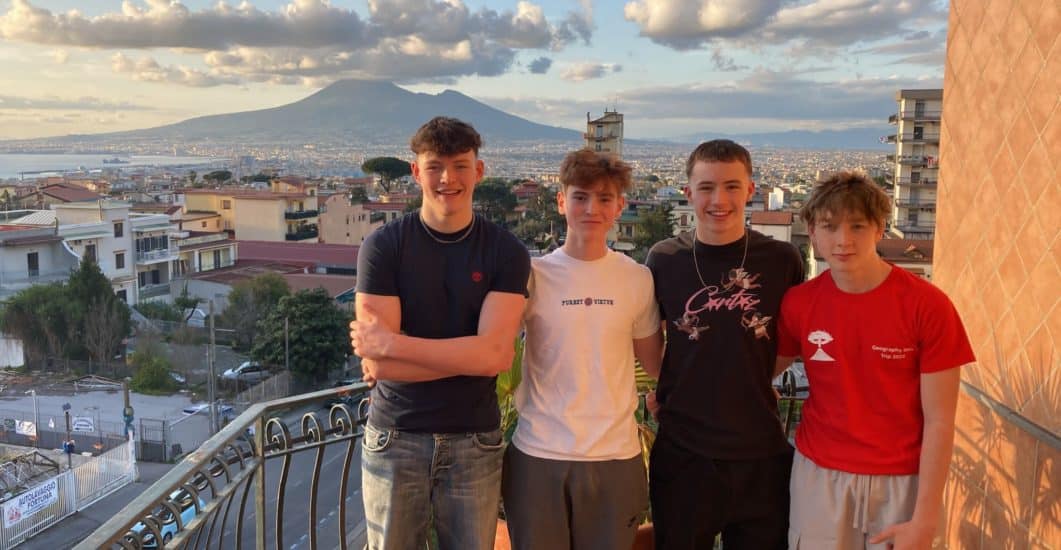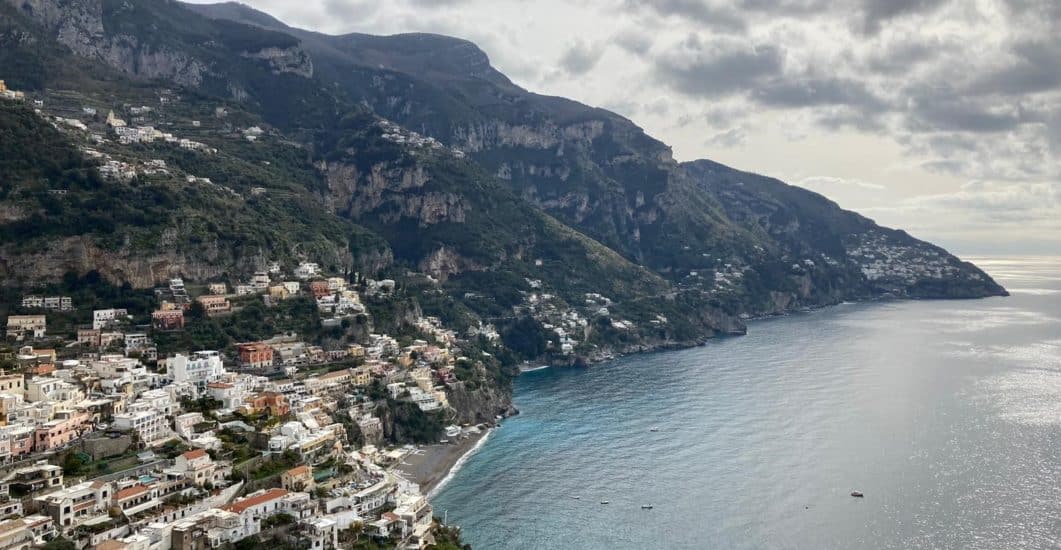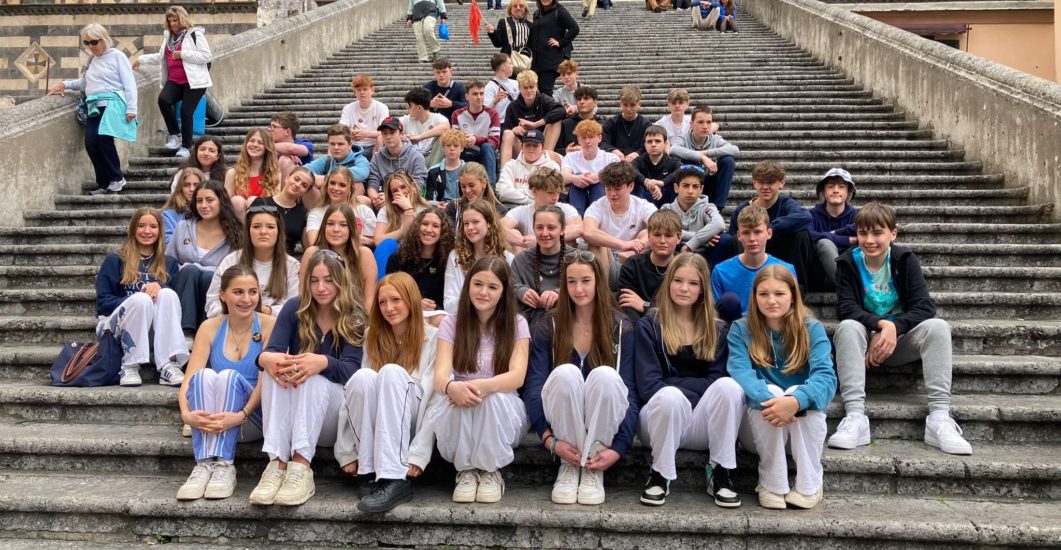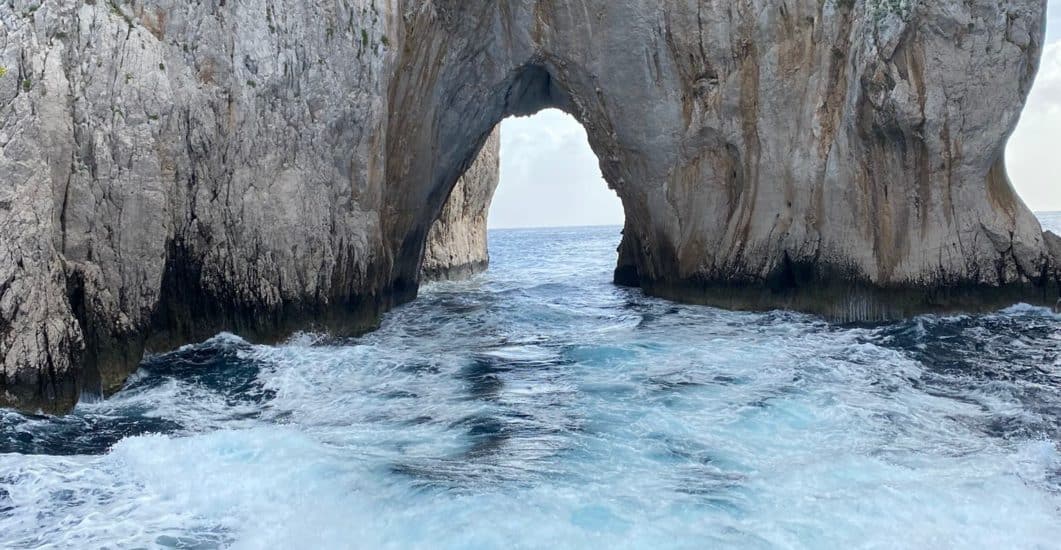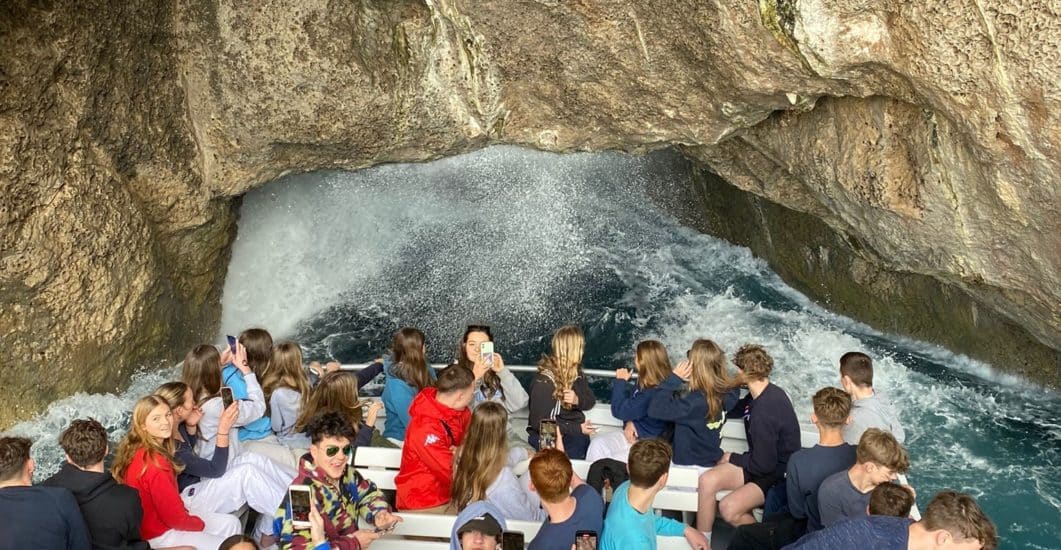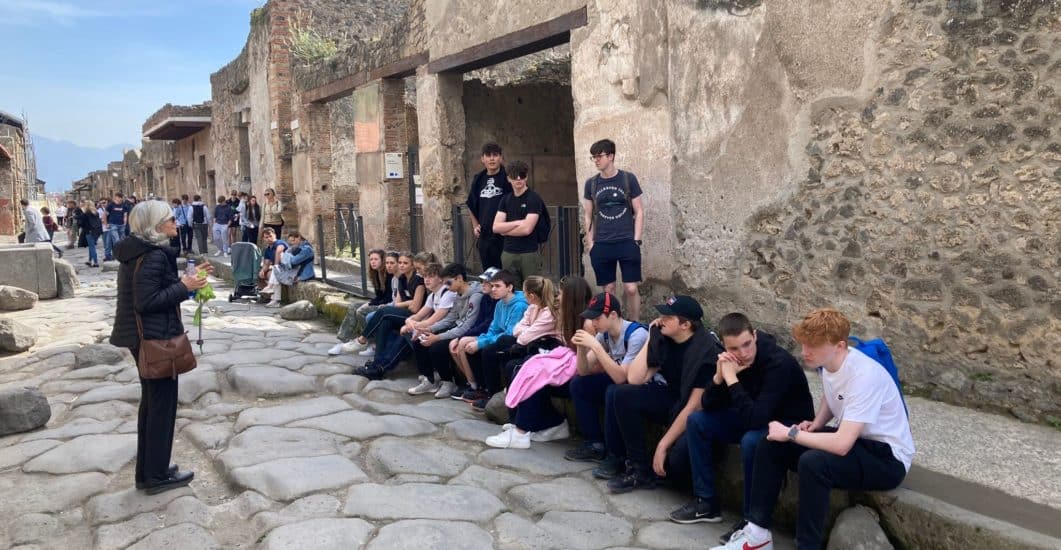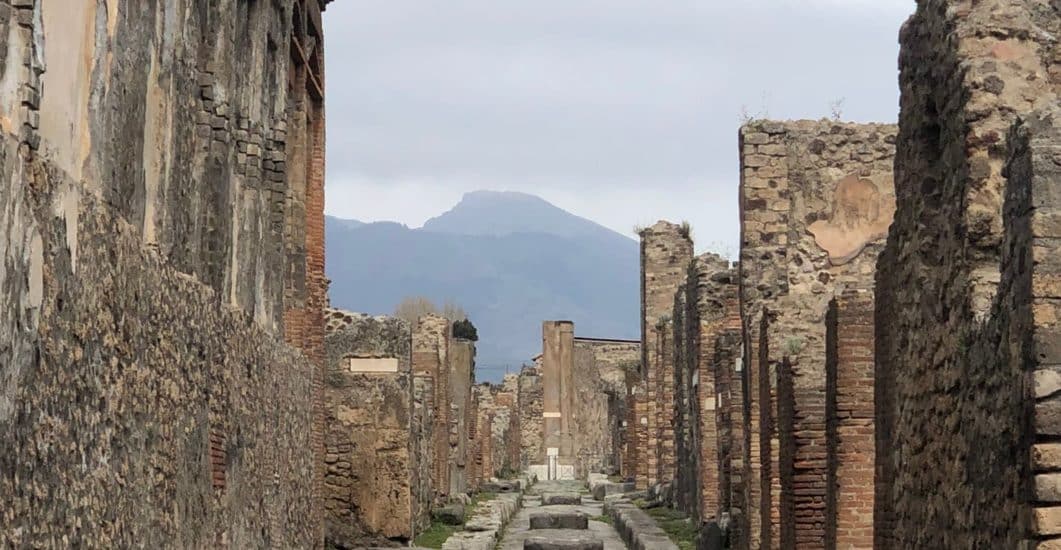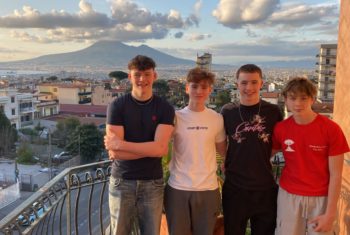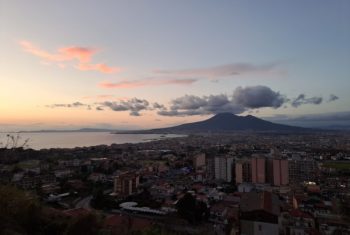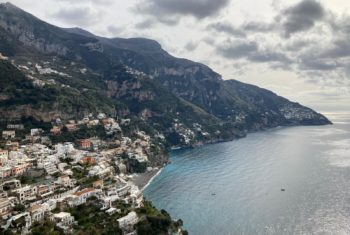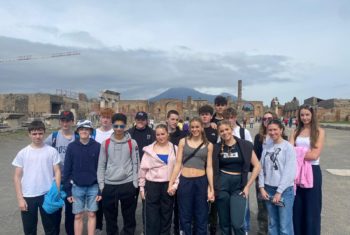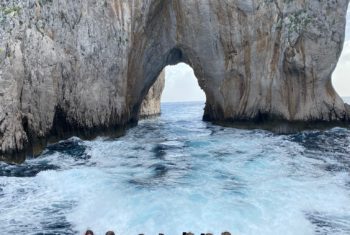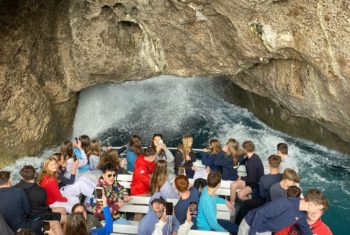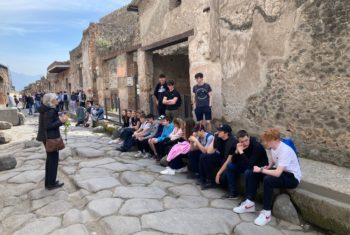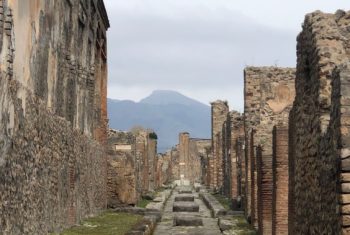Early, on the morning of the 29th March, 65 pupils and 10 staff flew to Naples to begin the much anticipated joint Geography and Classics trip. After landing at Naples airport, the Geography staff and students were straight on a coach to visit Herculaneum Archaeological Site, a historic city that was destroyed by the devastating 79 AD eruption of Mt. Vesuvius which eerily looms in the distance. They were able to explore incredibly well-preserved buildings, streets and artwork from the ancient Roman city. Especially impressive was the fact that due to the ejecta from the volcanic eruption, the coastline had extended many kilometres from its original position pre-eruption, this was evidenced by the original boat sheds which were once on the shoreline.
The Classics staff and students visited the Naples Archaeological Museum constructed in 1777 which contained many artefacts, from copper arrowheads and daggers to marble sculptures of many great figures such as Cupid and Pallas Athena. In the expansive museum, many artefacts from years before were held and in the 3 floors and many rooms within beautiful wonders were kept such as ancient coins and obsidian arrowheads among others. They also participated in a photography competition at the museum comprising two parts: ‘Best self with artwork’ and ‘Best arty photo’. The group had 2 hours to split off into groups of 3 and above to explore the museum and gaze upon the exhibits within. The exhibitions varied from paintings of the Trojan war to sculptures of ancient Roman emperors including Caesar and Vespasian. After a very educational day for both departments, they all returned to the hotel, which had beautiful views of Mount Vesuvius, for a lovely Italian meal before unpacking and heading for bed.
Day two for the Geography group involved a day trip driving along the Amalfi Coast with their guides, Tina and Jessica who were extremely knowledgeable about the local area and provided all sorts of fascinating geographical facts and information including the infamous lemons and olives grown on this coastline. One of the highlights of the trip was the stop at the Positano viewpoint where they took in the vista of the stunning cliff-top village overlooking the sea. Most of the day was then spent in Amalfi town itself exploring the cathedral, local shops and streets, soaking in the Italian atmosphere.
Day two for the Classics trip set off Herculaneum, a remnant from the eruption of 79 AD that was preserved. In Herculaneum lies the remains of many killed as they struggled to leave the coast in their boats. They had approximately 14 hours to retreat, however, the air was thick and rose to around 250 degrees Celsius, cooking the residents alive. The students discovered that although the first excavations began in 1709, it wasn’t until the late 1900s that the skeletons of people attempting to escape via the boats were found; before that, archaeologists assumed the population of Herculaneum had managed to escape. The truth however was quite the opposite. The group was taken around the ruins to see the ancient preserved writings and buildings, with most of them only half destroyed. After their trip to see the excavated city the Classics group were taken by coach to Poppea’s Villa, an expansive district belonging to the second wife of Nero. The villa contained many statues that were recovered and allowed the group to see all around Poppea’s home – well, nearly all of it as some areas were closed such as the cubiculum and Centaur statues – while also exhibiting statues of old.
Day three was a trip together for both the Geography and Classics groups to Pompeii, the famous city buried under volcanic ash and pumice after the 79AD eruption of Mt. Vesuvius. Here, they explored the ruins of the city including ancient streets, public buildings and even a brothel! This was exciting to bring to life the sheer destruction and magnitude of the volcanic eruption. After visiting Pompeii, they all headed to climb the spectacular Mount Vesuvius (even though the volcano is still considered active, currently it is safe to climb!) The views at the top of the Bay of Naples were spectacular and it was interesting to note the volcanic features and the monitoring stations situated at points on the volcano. This was truly a spectacular day.
Geography and Classics spent their final day on the island of Capri. Departing on a boat from Castellammare Port they arrived at Capri Harbour and went straight onto a smaller boat and toured around the island, which students labelled as ‘stunning’. The boat ride consisted of exploring a range of impressive geological landforms including arches and stacks as well as caves and grottos. On land, they visited the impressive vista point at Anacapri and all enjoyed an Italian lunch in a local restaurant with impressive views across the bay. The remainder of the day involved exploring Capri and the harbour where pupils enjoyed some leisure time and the last chance to immerse themselves in the local Italian life.
“ The pupils were all superb on the trip, hugely engaged in the academically enriching aspects of the trip which supported their IGCSE Geography curriculum. A huge thank you also to all the staff who attended the trip and helped with making it such a success. ” Beccy Bownas, Head of Geography
